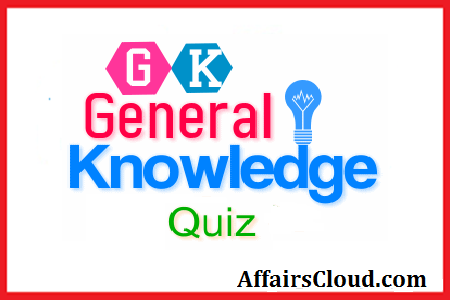Hello Aspirants. Welcome to Online General Knowledge section in Affairs cloud, which is important for all the competitive exams. We have created Some questions related to India Gk(Indian History) !!!
- Who was the last Mauryan ruler ?
1.Ashoka
2.Upagupta
3.Pushyamitra
4.Brihadratha
5.None of theseAnswer – 4.Brihadratha
Explanation :
Brihadratha Maurya was the last ruler of the Maurya Empire. He ruled from c. 187–180 BCE. He was killed by his general, Pushyamitra Shunga, who went on to establish the Shunga Empire. - Pillars represents the masterpiece of ……………………. sculpture
1.Mughal
2.Mauryan
3.Post-Mauryan
4.Magadha
5.None of theseAnswer – 2.Mauryan
Explanation :
The art and architecture of the Mauryan Empire constitutes the culminating point of the progress of Indian art. The period was marked by mature use of stone and production of masterpieces. - Five of the pillars of Ashoka, single Lion pillars are located at ………………..
1.Both 2 and 3
2.Rampurva
3.Vaishali
4.Lauria Nandangarh
5.Both 2 and 4Answer – 5.Both 2 and 4
Explanation :
Five of the pillars of Ashoka, two at Rampurva, one each at Vaishali, Lauriya-Areraj and Lauria Nandangarh possibly marked the course of the ancient Royal highway from Pataliputra to the Nepal valley. Several pillars were relocated by later Mughal Empire rulers, the animal capitals being removed. - The Ornate bull or Nandiswara situated in the ………………………..
1.Amaravati Piece of art
2.Gandhara school of art
3.Mathura school of art
4.All of these
5.None of theseAnswer – 1.Amaravati Piece of art
Explanation :
The pieces of art from the Amaravati School include the ornate bull or ‘nandiswara’ that was situated in the Amareswara temple,earlier forms of Lord Ganesha, Ganeshani and Lakshmi. - Nalanda University was founded by …………………….
1.Chandragupta
2.Skandagupta
3.Kumaragupta
4.Samudragupta
5.None of theseAnswer – 3.Kumaragupta
Explanation :
Nalanda University was founded by Kumaragupta I during the Gupta period. It was patronised by his successors and later by Harsha. Hiuen Tsang gives a very valuable account of the Nalanda University. The term Nalanda means “giver of knowledge”. - The Court of Chandragupta II at Ujjain was adorned by ………………… scholars
1.10
2.8
3.12
4.9
5.None of theseAnswer – 4.9
Explanation :
The Court of Chandragupta II at Ujjain was adorned by 9 scholars such as Kalidasa and Amarashimha. - In Gupta’s period Senabhakta was a/an
1.Army group
2.Responsibility
3.Tax
4.Land Revenue
5.None of theseAnswer – 3. Tax
Explanation :
Senabhakta was a tax paid when the army was marching for expedition. This tax was paid in the form of provision supplied by the people - In whose period civil and criminal law were clearly defined and demarcated first time ?
1.Mughal
2.Mauryan
3.Gupta
4.Magadha
5.None of theseAnswer – 3.Gupta
Explanation :
In the Gupta period, for the first time civil and criminal law were clearly defined and demarcated. Gupta kings were assisted by a council of ministers - Who introduced the place value system and the number zero in the number line ?
1.Aryabhatta
2.Dhanvantri
3.Bhaskara
4.Palakapya
5.None of theseAnswer – 1.Aryabhatta
Explanation :
Aryabhata was the first of the major mathematician-astronomers from the classical age of Indian mathematics and Indian astronomy - Who was the great mathematican ?
1.Aryabhatta
2.Dhanvantri
3.Brahmagupta
4.Palakapya
5.None of theseAnswer – 3.Brahmagupta
Explanation :
Brahmagupta was an Indian mathematician and astronomer.He is the author of two early works on mathematics and astronomy:Brahmagupta was the first to give rules to compute with zero.
AffairsCloud Recommends Oliveboard Mock Test
AffairsCloud Ebook - Support Us to Grow
Govt Jobs by Category
Bank Jobs Notification



